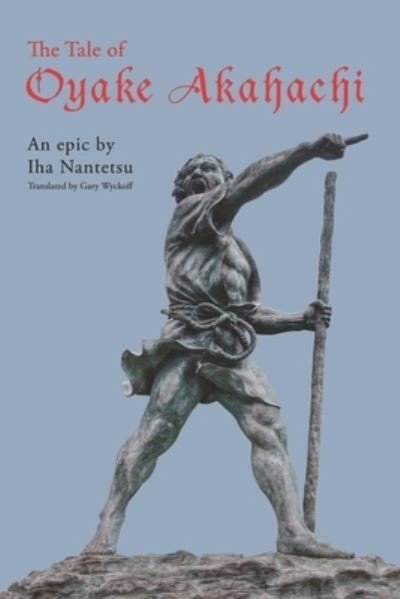
Fortæl dine venner om denne vare:
The Tale of Oyake Akahachi
Iha Nantetsu Iha
Bestilles fra fjernlager
The Tale of Oyake Akahachi
Iha Nantetsu Iha
Here, available for the first time in an English translation, is Oyake Akahachi, the epic masterpiece by Iha Nantetsu, known as one of the greatest poets and writers produced by Okinawa (Ryukyu) in the 20th century.
In the official history of the Ryukyu Kingdom, one name stands out above all others, and that is Oyake Akahachi. For centuries he was portrayed as a villain and traitor, but in this spectacular tale Iha Nantetsu has aimed to correct the historical record, and show Akahachi (literally "Red Hornet") as his fellow islanders have always seen him, a great hero who liberated them from the tyranny of an unjust King.
This is a tale in which fact is far stranger than fiction. All the key figures portrayed here existed, and the main events described by Nantetsu actually occurred.
Akahachi was discovered wrapped in seaweed, at the foot of a seaside cliff on the tiny island of Hateruma, the southernmost inhabited island in all of Japan. He was raised by the local priestesses, and grew into a young man of rugged strength and fine character. He was very tall, and is reported to have had reddish hair and "eyes as blue as the sea".
When he reached adulthood, Akahachi left Hateruma and settled on Ishigaki, the main island of the Yaeyama group, some 400 km south of mainland Okinawa. His sense of justice was offended by the behavior of the officials of the Ryukyu King, who treated the farmers like animals and forced them to pay oppressive taxes in the form of rice and woven cloth. However, it was not until the King banned their religion, based on the reasoning that the three days the islanders wasted in their annual Great Festival would be put to far better use working in the fields, that Akahachi rose up in rebellion. By virtue of his innate charisma nearly all the islanders came over to his side, and for a few brief years Akahachi created a utopia in which the islanders discovered what it was like to live as free men.
The former ruling family, in fear of their lives, tried to appease Akahachi by offering him their youngest daughter, the lovely Kuitsu. Her mission was to poison Akahachi at the first opportunity, but instead she recognized his heroic qualities, fell deeply in love, and turned away from her own family.
One of the most fascinating things about this remarkable work is how relevant it remains to our modern lives. The book was first published in the late 1930s, a time when class struggle, colonialism, imperialism, communism, and impending war were in the forefront of people's minds. It was also a time when Okinawans were still openly considered second-class citizens by many of their Japanese compatriots, and it may be argued that the care Iha Nantetsu took to describe the climate and nature, flora and fauna, history and culture of Ryukyu, along with the great heroism of Akahachi himself, was intended to help the Japanese appreciate and accept Okinawa as an essential part of Japan.
Almost as soon at the book was published it was made into a feature film by Toyoda Shiro. It was a sensation throughout the country. Unfortunately, not long after publication war broke out. The Akahachi movie was banned in Japan's colonies, lest its theme of justice in the face of oppression be taken too literally, and after Japan's defeat in the second World War, Okinawa found itself destroyed and occupied. It was only in 1961, while Okinawa was still under occupation by the US military, that Nantetsu was able to reissue his book, partly as an encouragement to his fellow citizens who were demanding a return to self-rule. Okinawa reverted back to Japan in 1972.
Iha Nantetsu was born 1902 in Tonoshiro village, Ishigaki. In 1923 he was able to move to Tokyo, where became a member of the literary society 'Shi-no-ie' (Poetry House), led by the poet Sato Sonosuke. He published 27 books, and passed away in 1976 at the age of 74.
show more
| Medie | Bøger Paperback Bog (Bog med blødt omslag og limet ryg) |
| Udgivet | 19. oktober 2021 |
| ISBN13 | 9784947713018 |
| Forlag | Amazon Digital Services LLC - Kdp |
| Antal sider | 314 |
| Mål | 152 × 228 × 17 mm · 462 g |
| Sprog | Engelsk |
Se alt med Iha Nantetsu Iha ( f.eks. Paperback Bog )

